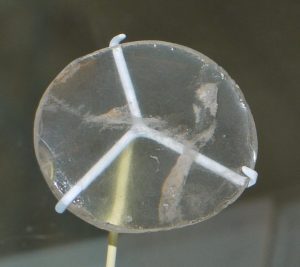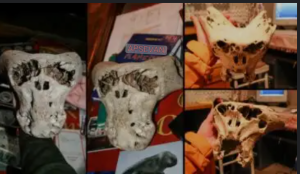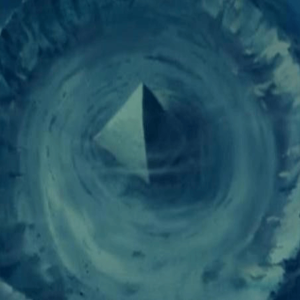The Elephant’s Foot of Chernobyl – A monster that emits death!
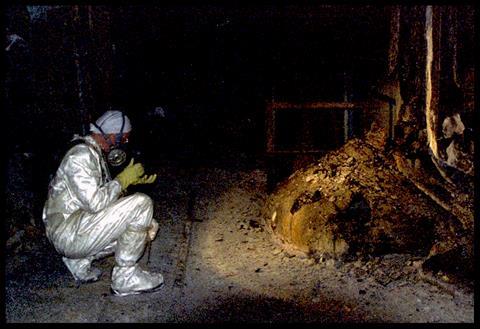
The Elephant’s Foot—a “monster” that spreads death even today is hidden in the bowels of Chernobyl. It is a mass of about 200 tons of molten nuclear fuel and rubbish that was burned and shaped into a shape reminiscent of an “elephant’s foot.” This mass remains radioactive and scientists cannot reach it.
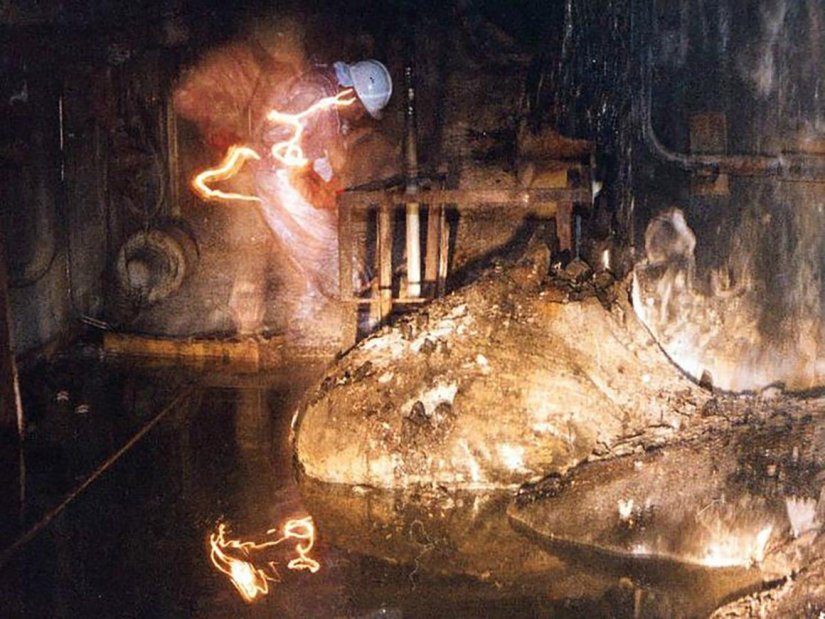
Chernobyl, the name of a town in the then Soviet Union or the present Ukraine which is remembered as a terrible disaster site, being one of the darkest parts of human history.
The Chernobyl Disaster:
It was the night of April 26th, 1986, when the fourth reactor exploded in a nuclear power plant in the town of Chernobyl. Within seconds, it turned into a nuclear disaster site that caused deadly radioactivity to Russia, Ukraine and even Belarus.
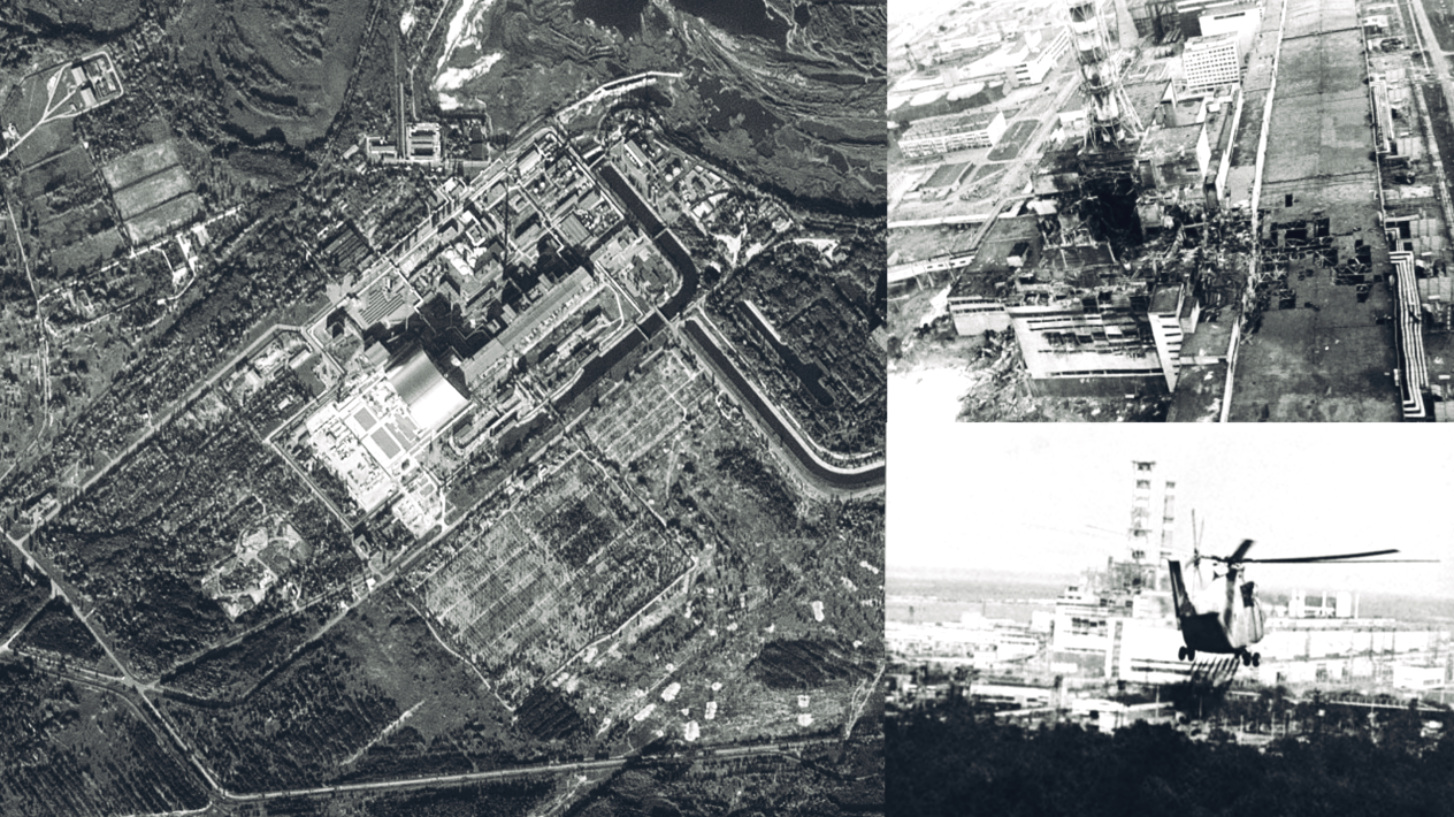
The explosion was 500 times more intense than the detonation of atomic bombs in Hiroshima and Nagasaki. According to the official accounts, 31 people had died in the disaster and around 30,000 to 80,000 people later died of cancer on various occasions. About 1 million people were immediately evacuated and the town was soon totally abandoned. Since the tragedy happened, Chernobyl has been declared as an uninhabitable land for humans for the next 3000 years. To this day, over 7 million people have been affected by radiation exposure as an aftermath of the Chernobyl Nuclear Disaster.
The Chernobyl Disaster is said to have been caused by human errors―a flawed reactor design that was operated with inadequately trained personnel. To know more about the Chernobyl Disaster and its present condition, read this article.
The Elephant’s Foot:
The Elephant’s Foot is a mass of Corium formed during the Chernobyl disaster. It was first discovered in December 1986, about eight months after the nuclear accident took place.
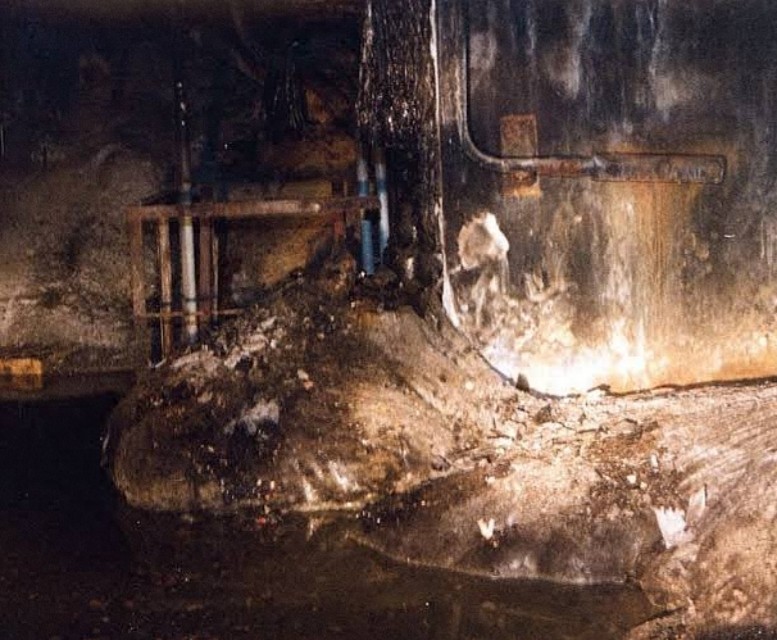
The object has a bark-like structure that folds into multiple layers and has a blackish colour because it contains graphite. The popular name “Elephant’s Foot” comes from its wrinkled appearance and shape, resembling the foot of an elephant. The Elephant’s Foot is located on the steam distribution corridor of the Chernobyl nuclear power plant, 6 meters above the ground, just below the reactor No. 4 under the reactor chamber 217.
Composition Of The Elephant’s Foot:
The Elephant’s Foot is actually a mass of Corium―a lava-like nuclear fuel containing material created in the core of a nuclear reactor during a meltdown accident. Corium is also known as the fuel-containing material (FCM) or lava-like fuel-containing material (LFCM). It consists of a mixture of nuclear fuel, fission products, control rods, structural materials of the reactor and various common products produced in the chemical reaction such as steam, water, air and etc.
The Elephant’s Foot is mainly composed of silicon dioxide which is the main compound of sand and glass, with traces (2-10%) of the nuclear fuel uranium. Compositions other than silicon dioxide and uranium include titanium, magnesium, zirconium, nuclear graphite, etc.
Nuclear graphite is generally any type of synthetic graphite of high purity that is specifically made to be used as a neutron moderator or neutron reflector in the cores of nuclear reactor. Graphite is an important material in nuclear reactors, because of its extreme purity and its ability to withstand extremely high temperatures. High purity is necessary to avoid the absorption of low-energy neutrons and the formation of unwanted radioactive substances.
The density of the Elephant’s Foot as a substance was extremely high, and it was hard enough to accept the drill for sampling that was mounted on the remote control robot, so the sniper was finally called to the scene and shot with a Kalashnikov gun from a distance. The part was destroyed and a sample was collected for component investigation.
The mass is largely homogeneous, although depolymerized silicate glass occasionally contains crystalline grains of zircon. These zircon grains are not elongated, suggesting a moderate rate of crystallization. As uranium dioxide dendrites developed rapidly at high temperatures in the lava, zircon began to crystallize during the slow cooling of the lava.
Although the distribution of uranium particles is not uniform, the radioactivity of the mass is evenly distributed. During the accident, the concrete beneath the reactor 4 was steaming hot, and was breached by solidified lava and spectacular unknown crystalline forms termed “chernobylites”.
As of June 1998, the outer layers of the Elephant’s Foot began to crumble and turn into dust and the whole mass began to crack.
Lethality Of The Elephant’s Foot:
In the context of lethality, the Elephant’s Foot is considered to be the world’s most toxic mass to this day. At the time of its discovery, radioactivity near the Elephant’s Foot was approximately 8,000 roentgens, or 80 grays per hour, delivering a lethal dose of 4.5 grays in less than 300 seconds.

Since then, the radiation intensity has decreased sufficiently so that, in 1996, the Elephant’s Foot was observed by the deputy director of the New Confinement Project, Artur Korneyev who took photographs using an automatic camera and a flashlight to illuminate the otherwise dark room. Even today, the Elephant’s Foot radiates heat and death, though its power has weakened. Korneyev entered this room more times than anybody else. Miraculously, he is still alive.
The Elephant’s Foot had penetrated through at least 2 metres of concrete from its past location. There was concern that the product would continue to penetrate deeper into the soil and come into contact with groundwater, thus contaminating the area’s drinking water and leading to disease and deaths. However, until 2020, the mass has not been moved much since its discovery and is estimated to be only slightly warmer than its environment due to the heat released by the ongoing disintegration of its radioactive components―the process is known as the radioactive decay.
What Is Radioactive Decay?
Radioactive decay is the process by which an unstable atomic nucleus loses energy by radiation. A material containing unstable nuclei is considered radioactive. Three of the most common types of decay are Alpha decay, Beta decay, and Gamma decay, all of which involve emitting one or more particles or photons.
What Does Radiation Do To Human Body?
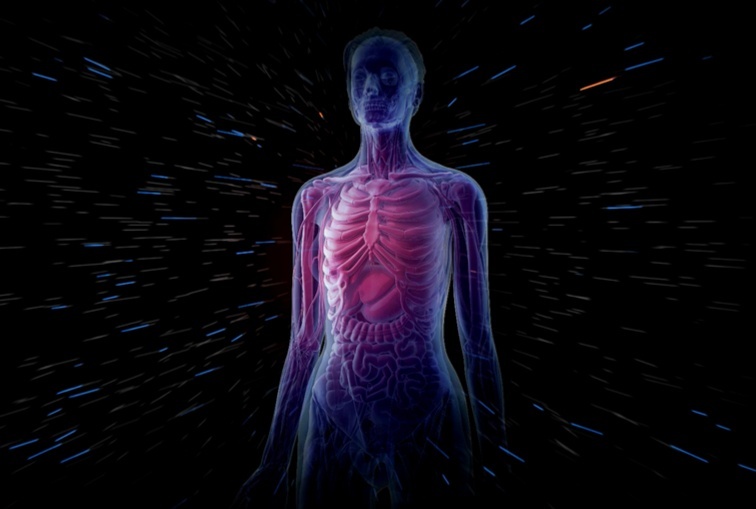
Not all radioactive reactions are equal. When excessive amounts of radioactive material get into the body or touch, we can be exposed to various kinds of physical and mental problems. Radioactive rays come into contact with humans destroy living cells or cause abnormal behaviour in cells. Alpha and Beta rays react to the external parts of our body, while the Gamma-ray creates deformations in the cells including internal micro-parts of our body.
Our DNA is held in chromosomes of our each cell―packets of billions of genetic blocks in the chain, with astonishingly precise sequences. These structures contain the exact data of what, when, where or how to do a particular thing in our body. But Gamma radiation can break up the chain, destroying or altering the bonds that hold DNA together. It could end up developing a cancerous cell in our body which then replicates over and over unpredictably.
A small amount of radiation but a longer stay can be harmful to humans. The amount of radiation is slightly higher, but it may not be harmful to humans due to a short stay. The risk of developing cancer and leukemia is high due to radioactive activity. In addition, radioactivity is also responsible for the physical and mental disorders of newborns and children. Our human body’s intake of different levels of radiation in a single day has led to numerous reactions. Although it varies depending on physical abilities, the following two lists can be taken for approximate ideas as a general capacity.
Reactions To Our Body After Taking Single Day Radiation Levels:
- Level 0 – 0.25 Sv (0 – 250 mSv): Completely safe, nobody will have any problems physically or mentally.
- Level 0.25 – 1 Sv (250 – 1000 mSv): People who are physically weak will experience indigestion, nausea, loss of appetite. Some may experience pain or depression and abnormalities in the bone marrow or lymph-glands or other internal parts of the body.
- Level 1 – 3 Sv (1000 – 3000 mSv): Nausea, loss of appetite is common, rashes will occur on the whole body skin. A feeling of pain, depression and abnormalities in the bone marrow or lymph-glands or parts of the body will be observed. A correct treatment in due course can heal almost all of these problems.
- Level 3 – 6 Sv (3000 – 6000 mSv): There will be frequent vomiting and loss of appetite. Bleeding, rashes, diarrhoea, various skin diseases and skin burn spots will occur. Death is inevitable if not treated immediately.
- Level 6 – 10 Sv (6000 – 10000 mSv): All of the above symptoms will appear as well as the nervous system will degrade. The probability of death is near to 70-90%. The sufferer might die within a few days.
- Level 10 Sv (10000 mSv): Death is inevitable.
To know more what exactly happens to a fatal radiation victim read about Hisashi Ouchi, the worst nuclear radiation victim who was kept alive for 83 days against his will.
Conclusion:
While it is not possible to determine the lowest harmful level of radioactivity, the safe level of human radiation is considered to be 1 millisievert (mSv). Nuclear radiation is deemed to be a terrible curse to bio-lives. Its damaging effect is also observed in the generation to generation of plants, animals and humans. The effect of such radioactivity can lead to the birth of children with genetic disorders and odd mutations. Therefore, radioactive wastages pose a threat to both human civilization and wildlife.
The Chernobyl Disaster And The Elephant’s Foot:

